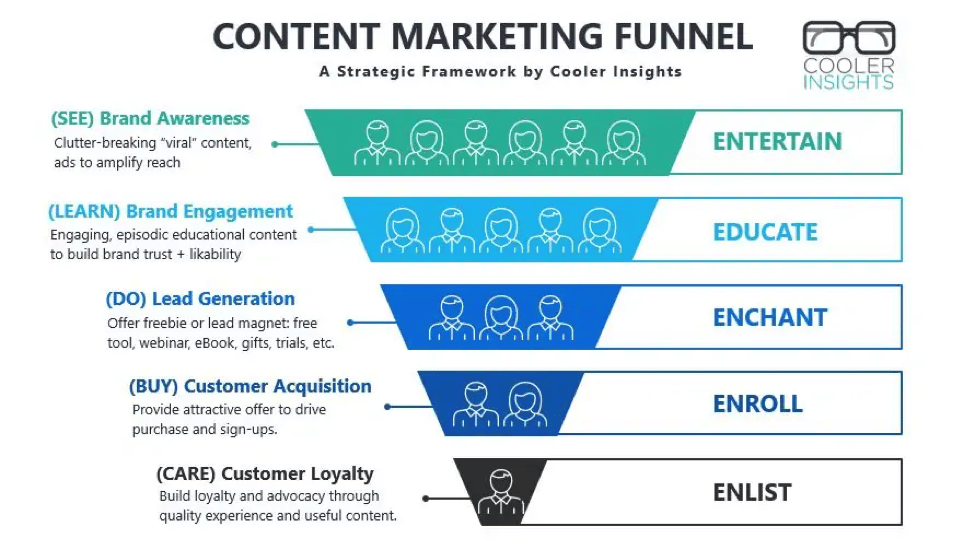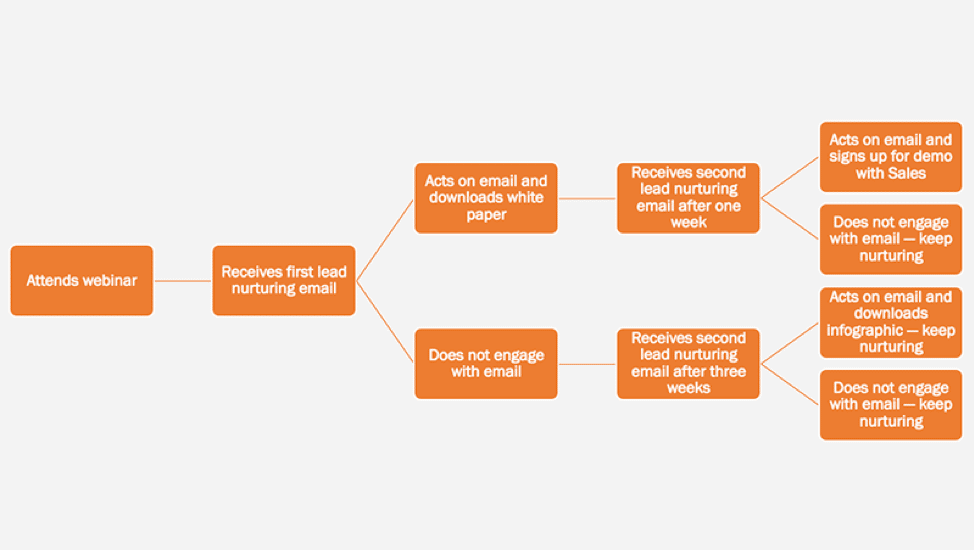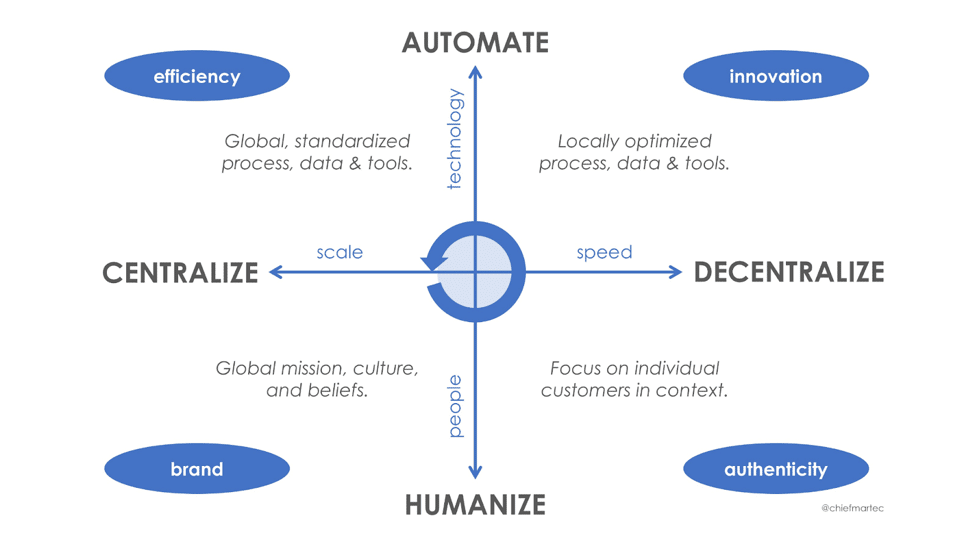For more than a decade now I’ve been working with companies to build out and execute effective B2B lead generation strategies that drive demand as well as product adoption. Before I am hired on to help, the most obvious challenge is the lack of quality leads; however, I want to take a step further and identify the following:
- Lack of cohesive strategy that involves all of marketing’s initiatives aligned with sales.
- Trying to do too many things at once and in some cases, not doing enough.
- Not utilizing or adopting the right martech stack to help track and measure results.
- Not having the needed marketing operations in place to align with sales.
So, what’s the solution to these problems?
You have to make sure that once you have a marketing strategy in place, the people you have – whether it is in-house or outsourced – are able to execute that strategy effectively. From there, you’ll need to make sure that the data you collect and report on are dependable with tangible ways to keep pushing ahead.
In today’s blog post, I’ll highlight five tactical B2B lead gen strategies to execute for explosive growth, so let’s get started.
1. Go all out on LinkedIn
Besides joining relevant groups and participating in conversations that are happening, make sure you are also interacting with other people’s posts while also sharing your own content. Outside of that, it is also important that you take LinkedIn Advertising seriously.
More recently, I have had numerous conversations with businesses that tried LinkedIn ads when they first launched but then never went back because of how expensive it is. Here are my thoughts on this:
- Revisit LinkedIn ads. The targeting is ridiculously amazing and easy.
- Diversify the creative assets you are pushing.
- Instead of driving traffic off of LinkedIn for conversions (i.e. form fills), check out Lead Gen Forms. These have been a ginormous life changer.
- Execute automation by upgrading to Sales Navigator. Stop sending manual follow up and outreach. Instead, leverage automation through Sales Navigator to keep following up with prospects until they respond. Once they do respond, you can then put them into a nurture workflow.
2. Develop intent-driven content
I talk to so many professionals who realize the importance of content but yet don’t always put in the needed efforts as well as investment to have it really foster growth initiatives. This could be a big downfall. Whether you’re giving away content for free or gating it behind a form, you have to position your expertise in some way, shape, or form. Develop a cadence of publishing content consistently and speaking to the pain points that your target audience is dealing with. From there, provide valuable advice that is also actionable.

I’ve told this story a ton before but this is exactly how I got started with my Fastmarkit. I blogged for two years straight until some good traction started happening. Clevels started reading my content and reaching out needing marketing help. Content is a long-term game and some serve to aid short-term wins too but you have to look at this as a marathon, not a sprint. In other words, relationship building vs. transactional.
3. Push drip campaigns and behavioral workflows
There are a ton of different paths you can take with email marketing but I highly recommend that you have specific drip campaigns that will nurture prospects into becoming customers and also having behavioral workflows. Here’s how I differentiate between the two:
- Drip campaigns: these are typically a one-way move. You have a set number of emails that are being sent and continue to send them until someone takes some sort of action or the drip itself ends.
- Behavioral workflows: these are based on lead scoring criteria and actions that prospects already have taken or do take. Based on these, prospects are nurtured differently and it is much more personalized with a higher chance of driving closed-won opportunities.
Before you implement these two, you have to put in the work to segment email lists, setting everything up properly within your automation tool and then ensuring that information is then captured in the right places for reporting as well as additional sales follow up.

4. Interconnect the right tools and processes
Here comes marketing operations. Seriously, cue the music. Ops is one of the important aspects of doing marketing right these days. More specifically, if you aren’t connecting the disparate tools you are paying for, what good are they when it comes to executions let alone reporting?

Therefore, here are some key items to keep top of mind:
- Have clarity for the entire marketing funnel.
- Know the criteria that sales is working under before a lead is handed off to them and get on the same page for what that process looks like.
- Once a lead is handed off, make sure that you’re still able to track the origination of that lead especially if it came from marketing so you can see marketing’s contribution to revenue.
- Get a playbook created that shows how everything will work.
5. Don’t get hung up on vanity metrics
“We need more social media followers!”
I’ve heard this a million times or maybe more. Truth is vanity metrics really are just there for aesthetics. They have zero bearing on how much revenue you’ll be able to generate let alone qualified leads. No 1:1 here.
The biggest focus when it comes to an effective B2B lead gen strategy is to ensure that the tactics you are pushing actually will drive results. In other words, if I know that the $1,000 I spend will drive 2-3 real sales opportunities, I’d take that over using the $1,000 to get new followers on social media.
Sure, one could argue that the more followers you have, the bigger you get, the more awareness you build and therefore you’ll get more leads. My point isn’t about the grey lines here. It’s about being as efficient and effective as possible with your lead gen implementations. Therefore, the biggest bang for your buck is to be clear on ‘where’ your target demo is online and then leveraging direct advertising/media buying tactics to reel them towards your product.
Bonus Tip: Outsource to subject matter experts
Sounds self-serving given that I run a marketing company, right? Well, the truth is that you have to know you may be the expert within your industry but you can’t be an expert in everything. From marketing tactics and strategies, it’s important you have the subject matter experts who know the landscape better than you do. After all, as Steve Jobs said, “It doesn’t make sense to hire smart people and then tell them what to do, we hire smart people so they can tell us what to do.” Same goes with outsourcing what your specific needs are. This is how you can centralize your efforts towards collective goals. This is about being effective and efficient while ensuring that your marketing dollars don’t go wasted.
Wrapping it up
Consistently optimize, refine, and make improvements along the way. B2B lead gen strategies that work best are the ones that are willing to invest in growth hacking + testing schedules that will attract the right personas. Don’t get complacent with your creatives, messaging, and positioning. Be fluid, yet stubborn about your overall goals.
Finally, know your KPIs, define what success looks like, and funnel everything back to the overall business objectives which specifically are centered around building awareness, driving quality traffic to your website, generating qualified leads, and then driving sales.





